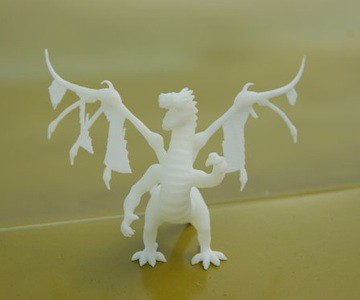When 3D printing becomes mainstream, it will have a major impact on many aspects of manufacturing and design processes. In the next weeks, I am writing a series of posts on how I think the 3D printing revolution will unfold and what impact it can have. In this first post, I am writing about the impact on supply chain.
So what is supply chain? Wikipedia defines it as:
A supply chain is a system of organizations, people, technology, activities, information and resources involved in moving a product or service from supplier to customer. Supply chain activities transform natural resources, raw materials and components into a finished product that is delivered to the end customer. In sophisticated supply chain systems, used products may re-enter the supply chain at any point where residual value is recyclable. Supply chains link value chains. (source: Wikipedia)
A typical supply chain for a product goes from product design to delivery to the customer. In the following graph is a simplified example of typical supply chain for a product. As many products, it is manufactured in Asia, and sold in one of the Western countries.
Now let us assume that 3D printing and personal fabrication become mainstream — either using a personal 3D printer or a local service. How does the same supply chain look like then?
As you can see, the supply chain is greatly simplified. The simplification is possible, because of a unique characteristic of 3D printing, which is the ability to manufacture different designs without building a complete production line for each and every product. It opens up the doors for localized production facilities close to consumer concentrations.
Another benefit is that there is no need for the production of large batches to offset the investments necessary for setting up the supply chain, tooling, production lines and transporting the product to the customer location. This reduces risks in the supply chain for product failures. With 3D printing, the production can take place in small batches or as one-offs, which makes it possible to adapt a product design almost immediately.
To summarize, the simplification of supply chain using 3D printing can lead to:
- Shorter lead times
- Reduced supply chain risk
- Reduction of transportation costs
Today 3D printed parts are still expensive compared to their mass-produced counterparts. But I am confident that gap will close in the coming years. The growth of the industry will lead to lower prices for machine and materials. Another caveat is that not every product can be 3D printed yet — either as a whole in one go or even in parts. That is a bigger gap to close. Though options exist to mix-and-match products sourcing both from 3D printed parts and off-the-shelf mass-produced parts. I expect that the transition will be more gradual than revolutionary.
I see significant benefits for 3D printing and personal fabrication for supply chain. It is not surprising that high-end manufacturers like Boeing, EADS and General Electric are already actively using or researching the options for 3D printing for the manufacturing of their products. As 3D printing further matures, the technology becomes within reach of a larger group of manufacturers. At some point, the manufacturers like we know today will vanish. Just like they did when all manufacturing moved to Asia.




